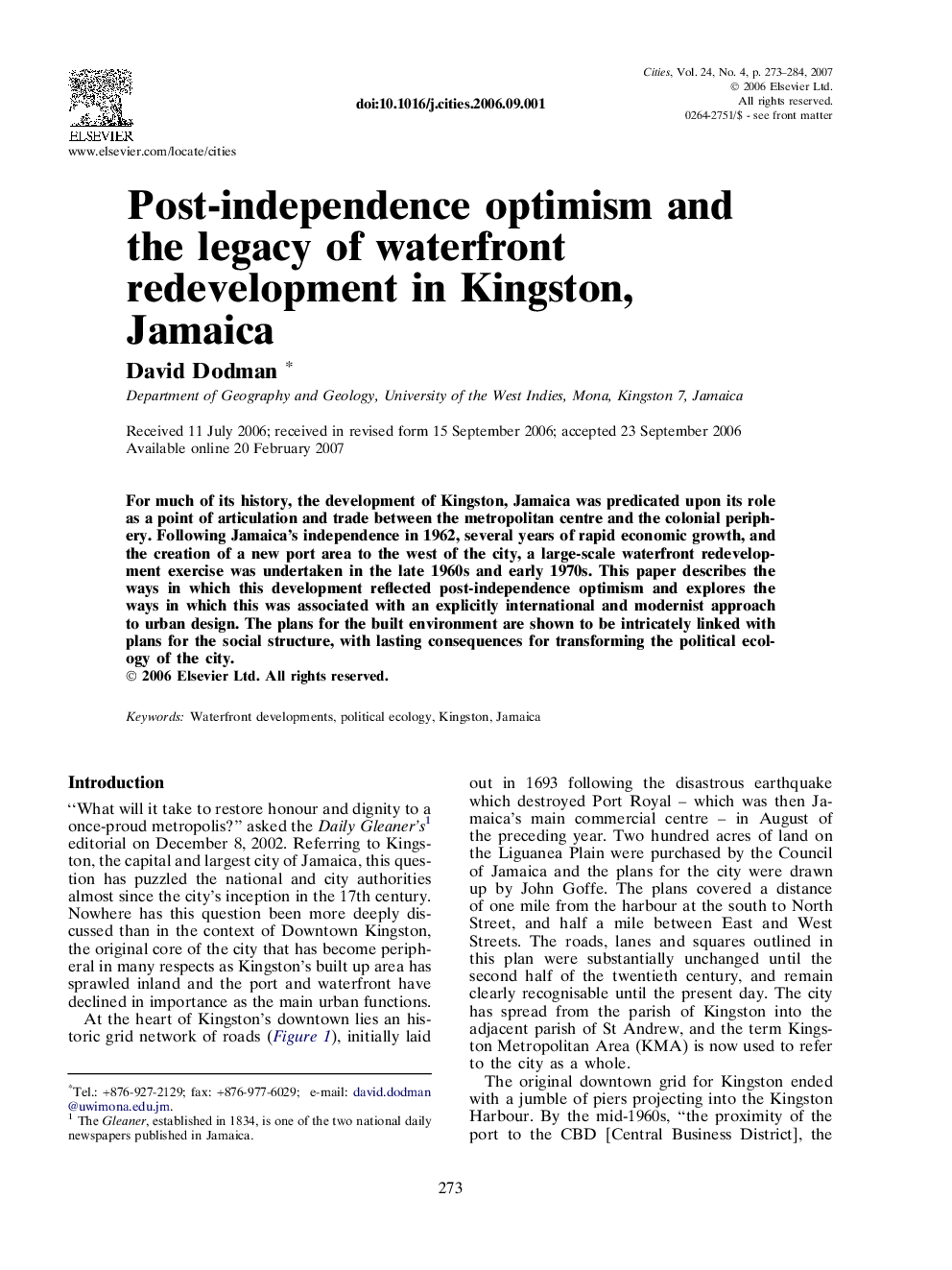| Article ID | Journal | Published Year | Pages | File Type |
|---|---|---|---|---|
| 1008980 | Cities | 2007 | 12 Pages |
For much of its history, the development of Kingston, Jamaica was predicated upon its role as a point of articulation and trade between the metropolitan centre and the colonial periphery. Following Jamaica’s independence in 1962, several years of rapid economic growth, and the creation of a new port area to the west of the city, a large-scale waterfront redevelopment exercise was undertaken in the late 1960s and early 1970s. This paper describes the ways in which this development reflected post-independence optimism and explores the ways in which this was associated with an explicitly international and modernist approach to urban design. The plans for the built environment are shown to be intricately linked with plans for the social structure, with lasting consequences for transforming the political ecology of the city.
